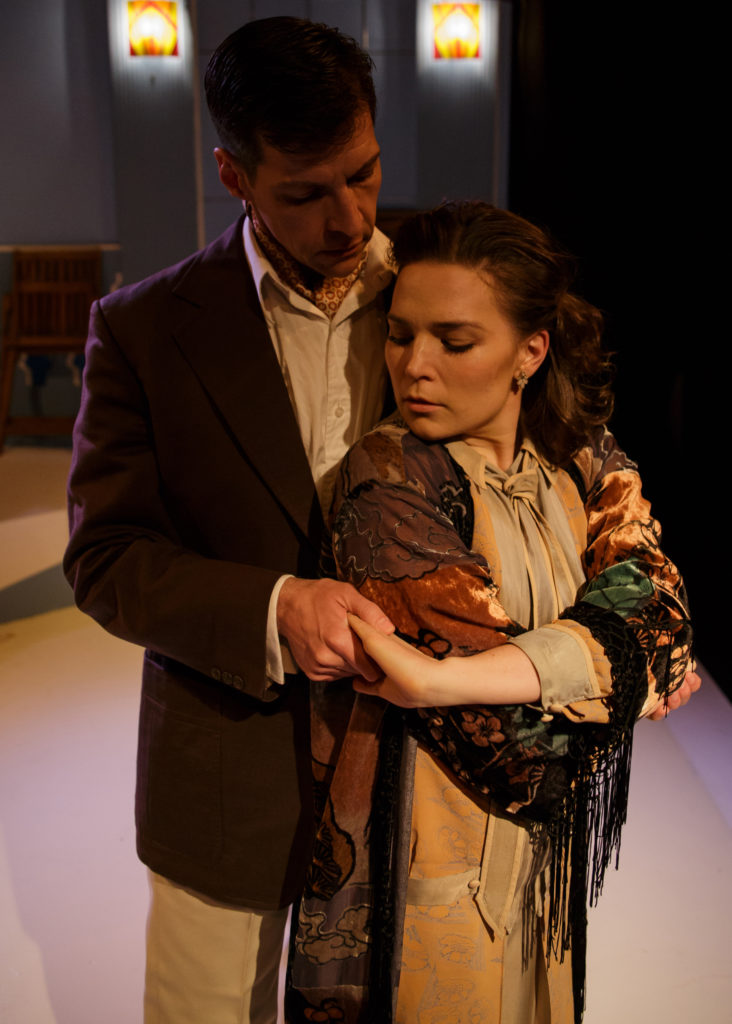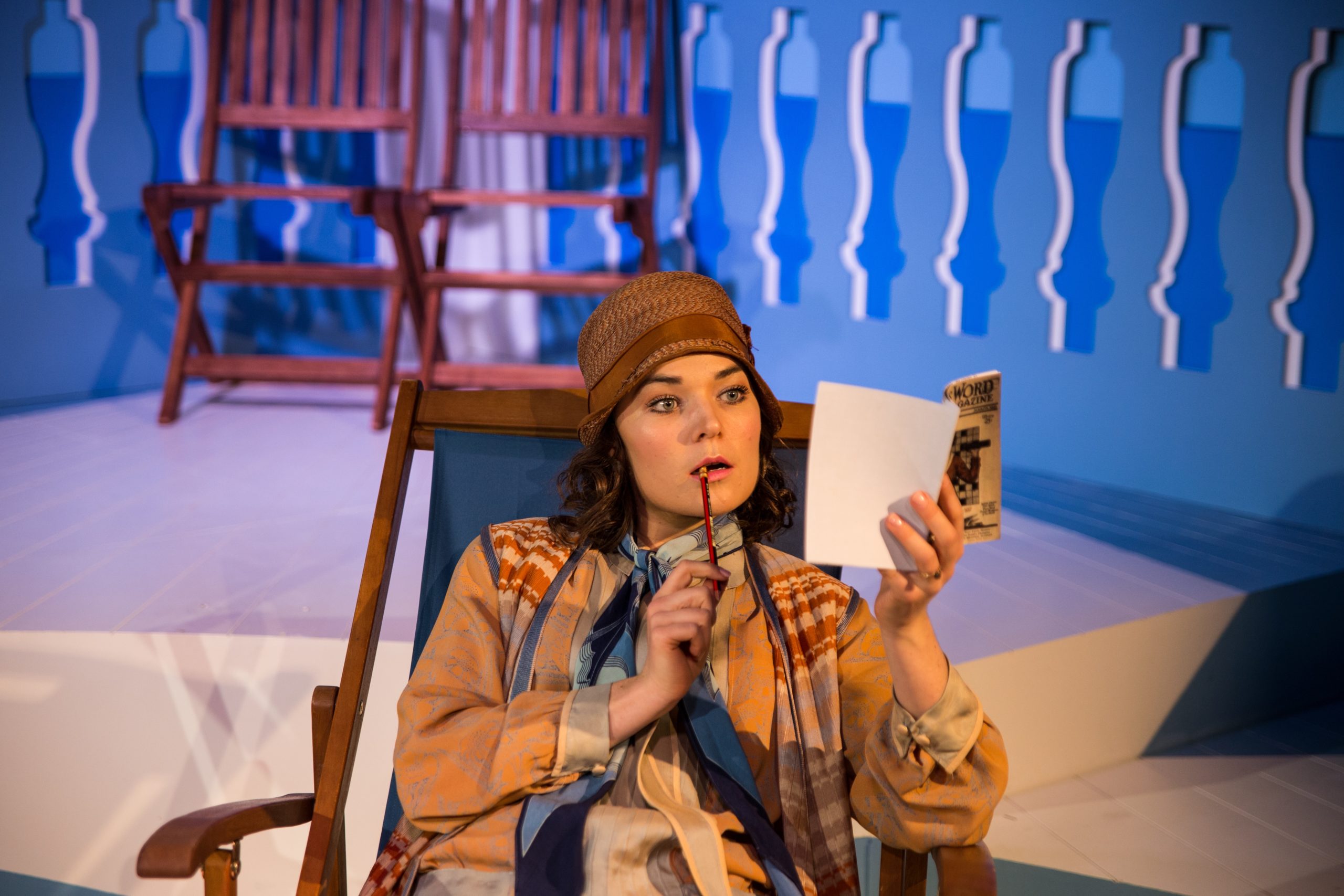The Lady With A Dog – Alces Productions / Upstairs At The Gatehouse, London
Chekhov’s tale of love and yearning updated to 1920s Britain, The Lady With a Dog introduces some successful new elements while others are best left to the original short story.

The Lady With A Dog
The last Chekhov adaptation I saw took the action from the Russian countryside to a South Asian space age. Why not, then, try out an adaptation of a short story originally set in the seaside resort of Yalta (and Moscow), but now updated to Jazz Age Britain? Chekhov seems so of his time/place that it’s infinitely interesting to see how his stories can be reworked.
The fundamentals of the story remain the same. Damian (Richard Lynson) and Anne (Beth Burrows) each find themselves alone at the Scottish seaside for a summer holiday. Damian and his wife have an understanding and he comes here annually in search of a new conquest. Anne, younger and less experienced than Damian, feels stifled by life with her husband. Both expect the spell to break when they go back to their lives. Only they can’t seem to forget each other. The second half feels out the boundaries of an affair in a society of new freedoms but old mores.
The original story by Chekhov is a poignant exploration of love and infidelity. And the play maintains the essence of these themes while infusing a new historical context. The adaptation is by Mark Giesser, who has furthermore added in the characters of the lovers’ spouses. Mere shadows in the original, more often than not the expanded spouses remain figments of Damian or Anna’s imagination. It’s a clever way to externalise inner thoughts, as each wonders what their own or their lover’s spouse might say or do, how they might react. A necessary device, perhaps, to translate Chekhov’s wordless bourgeois longing to the stage.
From Page To Stage
I had mixed thoughts about the success of updating the story’s setting and time period in this adaptation. Certainly, 1920s Britain is more accessible to the average audience at Upstairs at the Gatehouse than 19th Century Yalta (I just had to look up precisely where Yalta is – it’s on the Crimean Peninsula). And if Chekhov’s story anticipated a period of changing moral codes, by the 1920s this change was in full swing. Particularly after the upheaval of the First World War. This brings me to what I felt was a drawback of the script however: the characters were involved in a little too much setting-based exposition for my liking. The lines about the German economy and the Charleston or Tango didn’t quite ring true.
Similarly the additional characters of the spouses were a mixed success for me. A clever bit of movement direction by Xena Gusthart helps to distinguish when they are ‘real’ versus when they are a figment of Damian or Anne’s imagination. Elaine’s (Laura Glover) ascerbic wit and Carl’s (Toby Manley) inept charm add to the humour of the play. Carl actually became my favourite character: Manley has a great ability to find the humour in a scene. And yet it takes us further from Chekhov’s languid inner world. The end result is perhaps more successful if you’re not trying to draw these comparisons, so I would actually suggest not worrying about the original short story and just enjoying The Lady With a Dog as a 1920s-set drama/comedy. The acting is uniformly good, and the audience enjoyed some belly laughs on press night.
There is a simple set by Intellectual Property and rather effective lighting design by Sam M. Owen (look out for the cinema scene). Yet of the other creatives I think it’s Xena Gusthart’s already-mentioned movement design and choreography which stands out. Such a simple device separates fiction and reality, and saves a lot of potential confusion as well as adding a nice flourish.
Salterton Arts Review’s rating: 3/5
The Lady With a Dog on until 8 October 2023. Further details and tickets here.
Trending
If you see this after your page is loaded completely, leafletJS files are missing.

